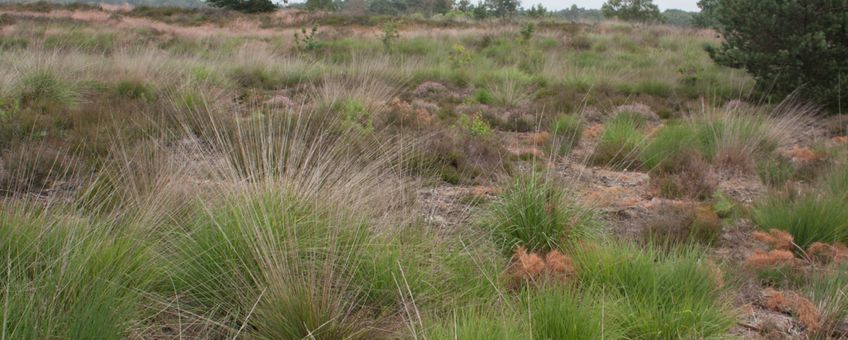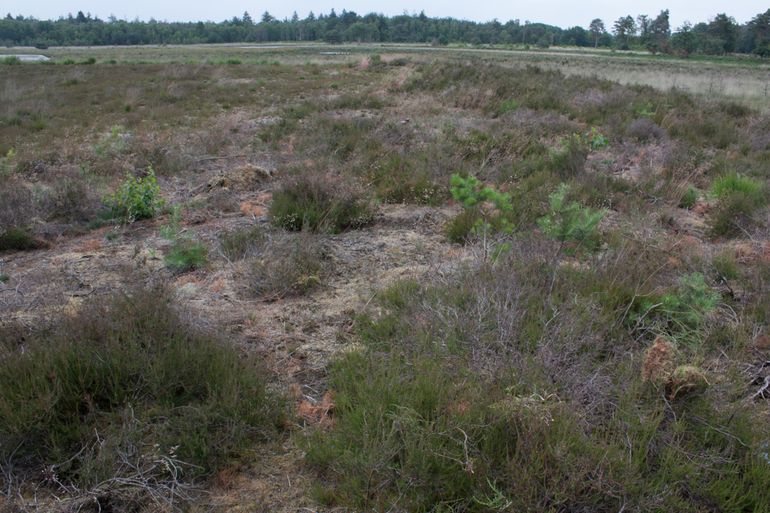
Soil stripping in dry heathlands does not mitigate high nitrogen deposition
KWR Water Research InstituteIn the years to come many mitigation measures are to be taken in Dutch Natura 2000 areas aimed at alleviating the negative effects of the excessive atmospheric nitrogen (N) load on nature. Indeed, in order to solve the legal and political impasse on the high N deposition problem in the Netherlands, it is proposed that these measures be intensified. But there is a question about the extent to which the measures act positively upon the ecosystem nitrogen balance. And do they in fact bring about the recovery of nutrient-poor vegetation types? In 2018, research was conducted into the effects of soil stripping in dry heathlands by KWR Water Research Institute, University of Amsterdam and the Center for Ecology and Hydrology. The research was commissioned by the Dutch drinking water utilities, reflecting the water sector’s concern for the protection of nature values as well as for safeguarding of nature to ensure good water quality for the production of drinking water.
Soil stripping accelerates nitrogen accumulation
 Soil stripping, which involves the removal of the nitrogen stock that has accumulated in the litter layer, is a frequently applied restoration measure for dry heathland in the Netherlands. The research was carried out in the Groote Heide (Province of North Brabant) Natura 2000 area, where the atmospheric nitrogen load has been high for a long period of time, and indeed still is. In the soil stripping plots no nitrogen was released upon the decomposition of organic matter, meaning all N deposition is accumulated in the ecosystem. Therefore the nitrogen leaching to the groundwater was very low under the soil stripping plots. In contrast, in the old heathland, where soil stripping was not performed, nitrogen was released from the soil. Under the old heathland the leaching accounted for a small part of the nitrogen deposition.
Soil stripping, which involves the removal of the nitrogen stock that has accumulated in the litter layer, is a frequently applied restoration measure for dry heathland in the Netherlands. The research was carried out in the Groote Heide (Province of North Brabant) Natura 2000 area, where the atmospheric nitrogen load has been high for a long period of time, and indeed still is. In the soil stripping plots no nitrogen was released upon the decomposition of organic matter, meaning all N deposition is accumulated in the ecosystem. Therefore the nitrogen leaching to the groundwater was very low under the soil stripping plots. In contrast, in the old heathland, where soil stripping was not performed, nitrogen was released from the soil. Under the old heathland the leaching accounted for a small part of the nitrogen deposition.
The results show that soil stripping leads to an increase in the annual accumulation of nitrogen. Twelve years after the soil stripping, a heathland vegetation arose with a predominance of the heath star moss – a nitrogen-loving moss species. There was no difference in the species richness of the vegetation between the plots that had and those that had not been subject to soil stripping. The research indicates that soil stripping is not a suitable mitigation measure to address high nitrogen deposition.

Implications for management and policy
Dutch nature policy is strongly focused on tackling the nitrogen problem through the large scale implementation of mitigation measures in Natura 2000 areas. The measures were set in motion and the deposition levels should gradually drop, however, over the last few years this trend has stagnated. The research shows that soil stripping of dry heathland does not help restore the vegetation, and that it in fact has a negative effect. Therefore, in the case of vegetation types where mitigation measures fail, efforts to reduce nitrogen deposition must be pursued much more vigorously. An additional benefit of lower deposition is a reduced level of N leaching to the groundwater, whereby this valuable source for the production of drinking water remains well protected.

The measure studied has no positive effect on the ecosystem nitrogen balance, and the influence of high nitrogen deposition on the vegetation remains apparent. The situation with regard to the many other mitigation measures that are presumed to have a favourable impact on the nitrogen balance has barely been investigated. It would therefore be desirable to increase our understanding in this regard.
More information
- Research report on the Effectiveness of Nitrogen-Mitigation Measures
Text: Camiel Aggenbach, KWR Water Research Institute; Martin de Haan, Brabant Water
Photos and figures: Camiel Aggenbach
